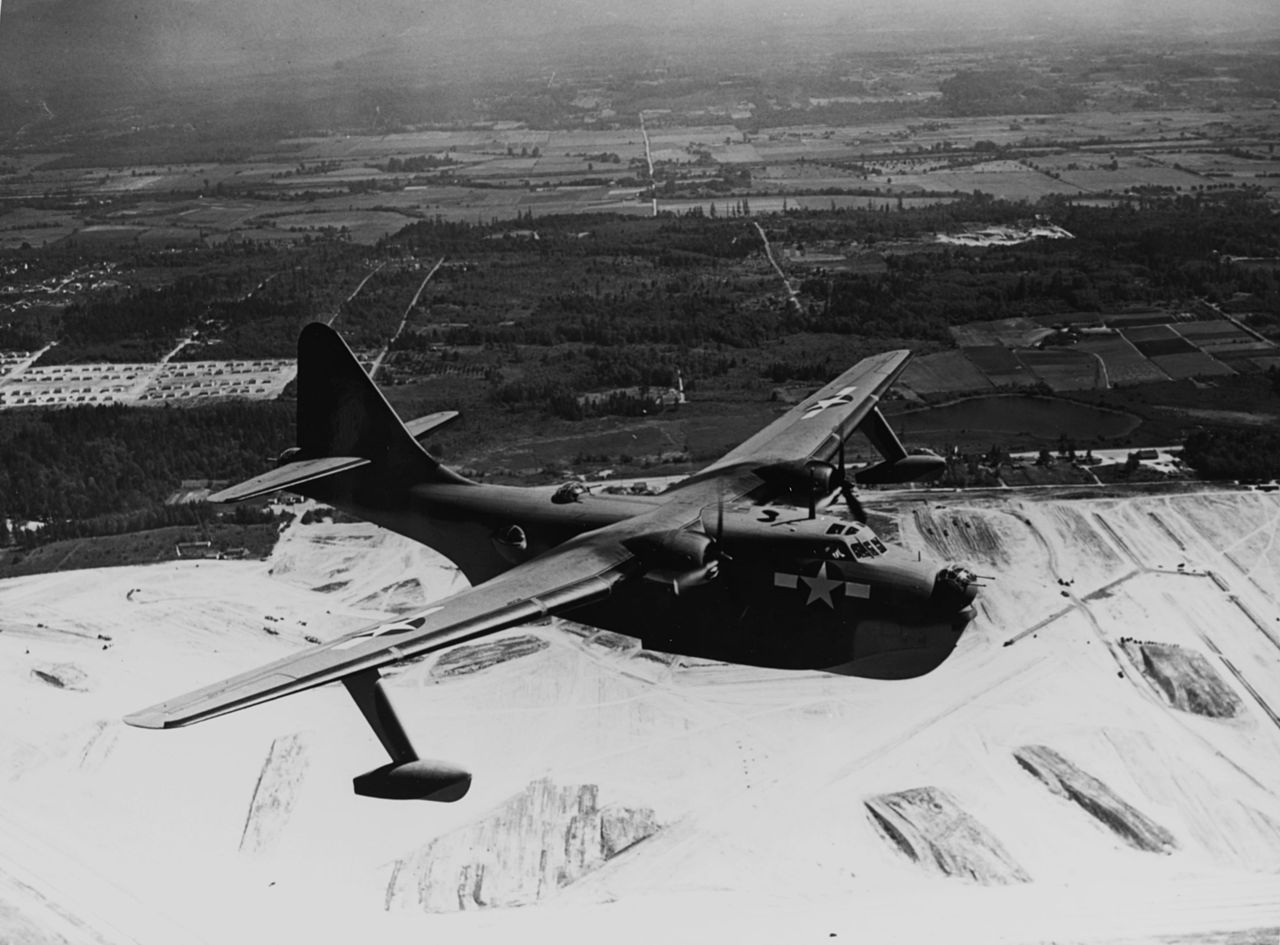
The sole XPBB-1, known unofficially as the ” Lone Ranger,” seen right after touchdown. Due to the priority of the B-29 program , plans to mass-produce the PBB-1 were cancelled .
The U.S. Navy Boeing XPBB-1 Sea Ranger patrol bomber (BuNo 3144) in flight circa in the summer of 1943.
Boeing PBB Sea Ranger (1942)
TECHNICAL SPECIFICATIONS (XPB B -1)
Type: 8 to 10-place long-range patrol boat
Total produced: 1
Powerplant: two 2,300-hp Wright R -3350-8 Double Cyclone 18-cylinder, twin-row air-cooled radial engines driving three-bladed electric, constant-speed metal propellers.
Armament: six .50-caliber machine guns in two-gun, power-operated turrets in bow, dorsal positions, one flexible .50-caliber machine gun in each waist position, and up to 20,000 lbs. of bombs.
Performance: max. speed 219 mph, cruise 158 mph; ceiling 18,900 ft.; range 4,245 mi. (normal), 6,300 mi.(max.).
Weights: 41,531 lbs. empty, 62,006 lbs. normal gross, 101,130 lbs. max. takeoff.
Dimensions: span 139 ft. 8 in., length 94 ft. 9 in., wing area 1,826 sq. ft.
Distinguished as the largest twin-engine flying boat to be built by any combatant during World War II, the Boeing model 344 was originally ordered by the Navy in June 1940 as the XPBB-1. At the time, the United States saw itself threatened on both oceans by German and Japanese submarines and surface raiders, leading BuAer to issue a specification for a very long-range, heavily-armed patrol boat that could loiter for a long periods of time over large distances. Even before the prototype flew, Boeing received a provisional order for fifty-seven production models and proceeded with construction of a new plant at Renton, Washington that would be dedicated to manufacturing the PBB-1.
Much of the aeronautical technology applied to the design of the XPBB-1 was derived from Boeing’s contemporaneous model 340, the XB-29, in particular a high-aspect ratio wing utilizing very large Fowler-type flaps to decrease takeoff and landing speeds. The long hull was very deep in section and employed a two-step planning surface. Each stabilizing float was attached to the wing with a single airfoil-shaped strut of sufficient strength to dispense with the norm al diagonal bracing. In order to minimize fuel consumption during long, maximum weight takeoff runs, the XPBB- 1 was stressed for boosted takeoffs from large barges designed especially for that purpose. Following its first flight on July 5, 1942, early testing o f the XPBB-1, dubbed Sea Ranger by the factory, revealed excellent flying characteristics and performance that met or exceeded its military specifications. However, a change in wartime priorities, unrelated to the aircraft itself, dictated that the type would never be placed into production: first, the new Boeing plant at Renton was to be wholly allocated to B-29 production and second, all R-3350 engines were likewise earmarked for the B-29 program. Later nicknamed the “Lone Ranger,” the XPBB-1 was delivered to the Navy in October 1943, where it was used for a variety of duties at San Diego. After the war, the aircraft was placed in storage at NAS Norfolk, Virginia.